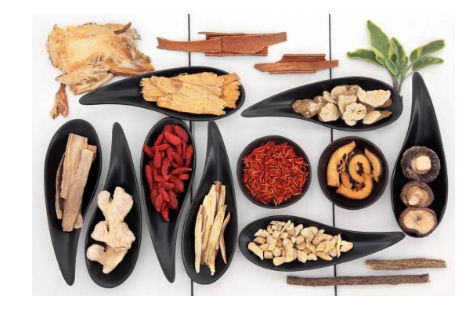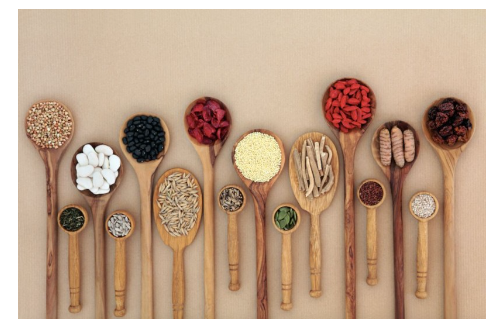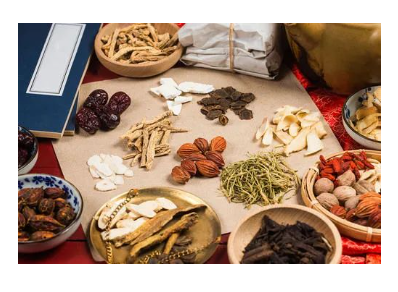Research and Development of Health Food from the Perspective of Same Source of Medicine and Food
April 09, 2024
China is one of the earliest countries in the world to use the concept of "medicine and food have the same origin" in food. Its history can be traced back to the Zhou Dynasty, and the Book of Rites clearly states that "food doctors" and "yam masters" have equal status. With the development of the times, the types of food with the same origin of medicine and food recorded in ancient books and records such as Shijing, Shennong's Herbal Classic and so on have gradually increased. According to the statistics of China's Tonic Diet edible plant resource bank, 4300 kinds of plants with the same origin of medicine and food have been included at present. Although the concept of "medicine and food share the same origin" has been proposed for a long time, defining it is also a challenge due to the profound influence of the "medicine and food share the same origin" concept on traditional dietary culture in Chinese history. With the development of modern food science and technology and the improvement of public health awareness, the concept of "medicine and food have the same origin" has gradually taken root in people's hearts.

01
The connotation of homology between medicine and food
Drug food homology refers to the fact that drugs and food have the same source, and its basic connotation is to regard drugs and food as one entity, that is, to view them as interdependent and mutually beneficial entities, which also play an important role in human health. The concept of medicine and food sharing the same origin originates from the traditional Chinese medicine concept of health preservation, emphasizing the use of food to supplement medicine and medicine to achieve the goal of physical health and longevity. From ancient Chinese health literature, it can be seen that ancient Chinese ancestors attached great importance to the relationship between diet and physical health, and even linked food with health preservation. There are many records in the Yellow Emperor's Inner Canon on dietary health preservation, such as "Five grains for nourishment, five fruits for assistance, five livestock for benefit, and five vegetables for filling", and many reasonable dietary methods are proposed, such as "Five grains for nourishment, and five vegetables for filling". The argument about "medicine and food have the same origin" first appeared in "Fifty Two Disease Prescriptions", which recorded that "bitter vegetables with one taste can cure all kinds of diseases, so it is called dietary therapy". In the era of the Compendium of Materia Medica, there were many discussions on the treatment of diseases with food, such as "bitter cabbage has a bitter taste, a cold and cool nature, can clear heat and detoxify, cool blood and stop bleeding, calm the liver and blood, reduce swelling and treat sores. Boiling soup or frying soup to wash hair can clear heat and clear the intestines, prevent skin ulcers, bleeding, and sores. Adding ginger juice to food can stop vomiting.". It can be seen from here that food and medicine have been connected for a long time. The term "medicinal food homology" now refers more to the existence of a certain correlation between food and medicine. This statement is actually not very accurate, because even in the theoretical system of traditional Chinese medicine, food and medicine are not separated. As Li Shizhen mentioned in "Compendium of Materia Medica": "Ginseng nourishes people, its function is like a god, and it can also ward off evil and dispel cold; Danshen promotes blood circulation and stasis; Cornus officinalis nourishes essence and blood; Goji berries nourish yin and kidney; Yam nourishes spleen and stomach... The combination of various medicines can also cure diseases." [2] The connotation of medicinal and food homology mainly includes the homology of medicine and food. Medical and food homology means that medicine and food have the same origin, and they are all plants, animals, and minerals from nature. Drugs and food penetrate each other, and there is no clear boundary between drugs and food. They can permeate and communicate with each other. Food and medicine have the same effect, that is, certain foods have the same effect as drugs, and certain drugs can also be consumed as food. The concept of medicine and food sharing the same origin has permeated people's dietary habits, such as the use of traditional Chinese medicine and ingredients, and foods with health benefits. The connotation of medicinal and food homology also involves people's concept of health preservation, that is, health preservation can not only be achieved through medication, but also through comprehensive health preservation methods such as healthy diet and sports.

02
The Current Situation of Health Food in China
2.1 Main forms of health food
At present, there are four main forms of health food in China:
Mainly using dietary supplements;
Mainly focusing on health functions;
Mainly functional foods;
Mainly based on common food for the general public.
2.2 The pharmaceutical and food homologous industry is gradually developing
The research and development of medicinal and food homologous products in China started relatively late, but the development momentum is good. In the late 1980s, some local governments began to research and develop food products with the same origin as medicine and food; Since the beginning of the 21st century, with the support of relevant national departments, the scale of the pharmaceutical and food homologous industry has been continuously expanding. At present, many health foods with the same origin of medicine and food have entered the market both domestically and internationally. Under the dual influence of traditional medical theory and modern advanced technology, many medicinal and food homologous products have gradually embarked on the path of industrial development, and their application scope is expanding day by day, and the number of users is also increasing.
2.3 Health food regulatory policies are becoming increasingly mature and standardized
At present, China has gradually improved its regulatory policies for health food. For example, health food must be approved by the State Administration for Market Regulation, comply with relevant technical specifications and laws and regulations before it can be listed. The label of health food must truthfully, accurately, and completely label its ingredients, functions, suitable population, usage, and dosage information. All advertisements related to health foods need to be reviewed by the State Administration for Market Regulation, and false advertising and exaggerated efficacy advertisements must be strictly restricted. The State Administration for Market Regulation may conduct spot checks on health foods sold in the market to ensure their quality and safety. In short, the standardization of regulatory policies for health food will be beneficial for consumers to use health food more reasonably, improve the quality and safety of health food, and promote the healthy development of the health food market.
2.4 Problems in Health Food
The main problem with health food in our country is the uneven quality. Due to the relatively loose management standards of early health foods, some low-quality, counterfeit and inferior health foods have emerged on the market, posing significant safety hazards to consumers; The legal provisions are not perfect enough, and the laws and regulations of health food in China are relatively backward, requiring further improvement; In order to protect the interests of consumers, the regulation of the health food industry needs to be stricter. It is not only necessary to strengthen the production supervision of production enterprises, but also to strengthen the supervision and management of the market. We should actively guide consumers to consume health food in a scientific and rational manner. When purchasing health food, consumers need to be scientific and rational, and should not blindly follow the trend. Before purchasing, they need to carefully read the product label and instructions, understand the ingredients, efficacy, and precautions of the product. At the same time, it is also necessary to pay attention to the amount and frequency of consumption to avoid excessive consumption or adverse reactions.

03
Characteristics of China's Health Food Market
3.1 Rapid market growth
With the guidance of national policies, the development speed of the health food industry has significantly accelerated, and new enterprises are constantly entering the market. The variety of products is also becoming more diverse, and their quality has been significantly improved. The health food industry in China has always maintained a strong development momentum. The market capacity of health food in China continues to expand, growing at a rate of 20% to 30% annually. As of 2019, China has become the world's second-largest health food market. It is expected that the health food industry will maintain strong growth momentum in the next 3-5 years.
3.2 Further increase in market concentration
At present, China has become the second largest health food market in the world. However, from the current market structure in China, the main reasons for the less intense competition in the health food industry are the small scale of enterprises, low technological level, low brand concentration, and chaotic distribution channels.
3.3 Gradually improving the system
From policy guidance to legal and regulatory guidance, to the improvement of industry standards, from strengthening government management to industry self-discipline and self-improvement of enterprises, from extensive development to specialized and refined development. In recent years, China's access system for health food has been continuously improved, and the government's management of health food has become increasingly strict. Necessary institutions and regulatory systems have been established, and a series of policies and regulations related to health food have been introduced. For example, the "Health Food Registration and Filing Management Measures" officially implemented on July 1, 2016 not only help ensure the quality, safety, and effectiveness of health food, but also protect the interests of consumers. The government has continuously increased its support and guidance for health food enterprises, which can support their technological innovation and product research and development work, and promote the standardized development of the health food market.

04
Notes on the development of health food from the perspective of food and medicine homology
The research and development of health foods from the perspective of food and medicine homology need to consider the balance of nutrition and functionality, while also paying attention to quality control and clinical trials, which can help provide consumers with safer and more effective health foods. In the research and development process of health food, attention should be paid to the following aspects.
4.1 Research on Nutrients
The research and development of health food needs to start from the perspective of nutrition, deeply study the effects and intake of various vitamins, minerals, proteins and other nutrients required by the human body, and select appropriate nutrients according to the nutritional needs of different populations, in order to meet the nutritional needs of the human body and improve body function. At the same time, it is also necessary to pay attention to whether there are any harmful ingredients in health food, as well as the safety and effectiveness of health food.
4.2 Screening of functional components
The functional components of health food refer to the components that can have a health effect on the human body, including various vitamins, minerals, amino acids, active enzymes, hormones, carbohydrates, etc. When developing health foods, it is necessary to screen out ingredients with health functions to ensure their safety and effectiveness. When selecting functional components, it is necessary to fully understand the mechanisms and influencing factors of different components, such as their absorption methods and mechanisms of action; At the same time, it is also necessary to consider the physical condition and nutritional needs of different populations, and select appropriate functional ingredients based on their physical condition and nutritional needs.
4.3 Guarantee of product safety
The research and development of health food needs to focus on product safety and quality control to ensure the safety and effectiveness of the product. In addition to complying with relevant national standards and regulations, strict quality control procedures are also required for product inspection and verification to ensure the safety and effectiveness of the product. In the development and promotion of products, it is also necessary to comply with relevant laws and regulations to ensure that the legitimate rights and interests of consumers are protected.

05
Research and development strategies for health food from the perspective of homology between medicine and food
With the increasing awareness of health among people, health foods have gained more and more attention and favor. Under the influence of the concept of homology between medicine and food, the development of health foods has become a topic of great concern. The concept of homology between medicine and food is an important aspect of traditional Chinese medicine culture, where the boundary between food and medicine is blurred. Therefore, the development of health food needs to consider its relationship with drugs, that is, while providing nutrition, it also needs to have a certain degree of functionality.
5.1 Strengthen innovative research and development
The health food industry is a promising sunrise industry in China. In the future, efforts should be made to strengthen research and innovation in health food, encourage the development of new functions of health food, optimize product structure, optimize regulatory system, strictly enforce safety access, promote product innovation, drive technological progress, increase standard setting efforts, strengthen technical support, strengthen science popularization and education, and promote the integration of science popularization and industry.
5.2 Strengthen standardized management
To further standardize the management of health food products with the same origin as medicine and food, and promote high-quality development of the industry, it is necessary to actively promote the formulation of standards for health food products with the same origin as medicine and food, improve their systems, and promote system construction; Promote the construction of "three products and one standard" (i.e. green food and geographical indications), strengthen the construction of quality management capabilities, and enhance publicity, education, and training. Actively build a platform for industrial development. For example, in terms of policies, organize research on relevant policies and regulations related to health foods with the same origin of medicine and food; In terms of standards, conduct research and formulation of standards; In terms of certification, carry out quality system certification; In terms of publicity, carry out quality public welfare training and publicity education.
5.3 Optimizing the consumption environment
The relevant laws and regulations centered around the Food Safety Law have basically established a legal framework for the supervision of health food, clearly defining specific measures for market supervision and management of health food, as well as related responsibilities and obligations. In addition, the procedures and requirements for market supervision and management of health food have been stipulated, and policy documents related to the development of the health food industry have been formulated to ensure food safety and promote the development of the health food industry. Therefore, it is necessary to strengthen education for consumers, popularize the basic concepts, market, and quality information of health food to consumers, improve their cognitive level, and increase their knowledge reserves to avoid being misled or encountering scams. Secondly, it is necessary to implement standardized management, establish standardized management norms for the production of health food, standardize all aspects of health food production, sales, and use, and ensure the quality and safety of health food. Finally, it is necessary to strengthen publicity and promotion of health foods, encouraging people to achieve the goal of health care through scientific nutrition balance and healthy lifestyle. At the same time, it is necessary to strengthen industry self-discipline, actively guide the normal operation and development of enterprises, improve the legal operating level of health food, and maintain the healthy development of the health food industry.
5.4 Construction of automated production lines
The traditional single production mode can no longer meet the development needs of health products with the same origin as medicine and food in China. It is necessary to build an automated production line, which preprocesses the raw materials according to the characteristics and functions of health food raw materials, such as crushing, chopping, tablet pressing, drying, etc., to process the raw materials to the ideal state and obtain products that meet the process requirements. At the same time, certain packaging methods should be adopted according to the production process, such as vacuum packaging, nitrogen filled packaging, filling, etc., to ensure product hygiene, facilitate storage and transportation, and control product quality.
5.5 Strengthen research on the homology of medicine and food
It is urgent to fully leverage the existing resource advantages, strengthen research on medicinal and edible homology, and develop a batch of medicinal and edible homologous foods with Chinese characteristics. At present, China is carrying out pilot work on food with the same origin as medicine and food. The research work should elaborate on the concept, connotation, and characteristics of food with the same origin as medicine. At present, many domestic experts and scholars have conducted in-depth research on the concept, scope, and characteristics of medicinal and edible homology. The Outline of the "Healthy China 2030" Plan clearly states that traditional Chinese medicine health preservation culture should be fully integrated into the national education system, clinical medicine system, and health promotion system. As an important component of "food medicine", the concept and connotation of food with the same origin as medicine will continue to improve with the development of traditional Chinese medicine theory. The theory of traditional Chinese medicine is a precious treasure left by ancient China, and modern medical scientific research has also proven the important role of the theory of "medicine and food have the same origin" in nutrition, health, and other aspects.
5.6 Deeply explore traditional food and medicine with the same origin
As one of the excellent traditional Chinese cultures, the homology of medicine and food also plays an important role in the new era. The Party and the government have always attached great importance to the culture of traditional Chinese medicine. As early as 1998, the Traditional Chinese Medicine Law was promulgated. On September 27, 2015, the State Council announced the "Healthy China 2030" Plan Outline, elevating the construction of a healthy China to a national strategy. Under the concept of "great health", traditional Chinese medicine theory is a treasure of China's traditional culture. Traditional Chinese medicinal and food homologous foods are widely distributed throughout China and have rich therapeutic and health functions. Common medicinal and edible foods such as chrysanthemums, goji berries, and honeysuckle have a certain effect on improving immunity; And medicinal and edible foods such as kudzu root, hawthorn, and Poria cocos that can improve myocardial blood supply function also have health benefits.
06
epilogue
Food with the same origin as medicine and food is an important component of China's traditional food and medicine culture, and has broad application prospects in China's food industry. On the basis of inheriting the theory of traditional Chinese medicine and food homology and modern technological achievements, we should strengthen the exploration and utilization of traditional Chinese medicine and food homology resources from the perspective of medicine and food homology, and make full use of them







